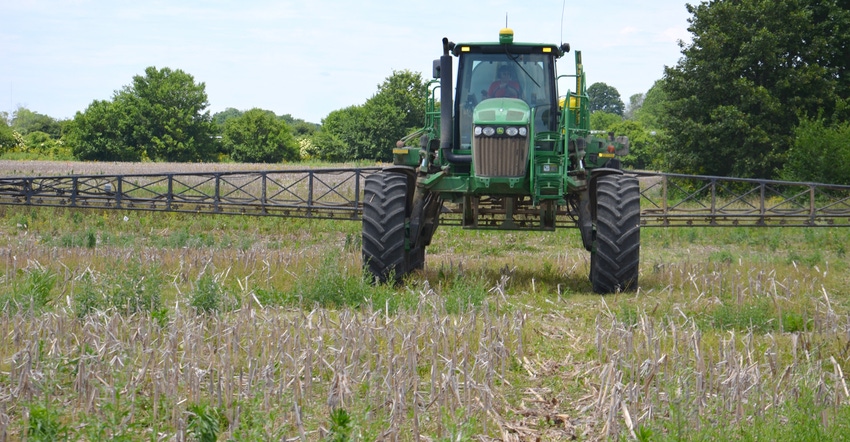
Some two decades ago, weed control seemed easy. Spray glyphosate postemergence with the proper additives, and you could control almost any weed situation — and do it cheaply. Bryan Young, Purdue University weed control specialist, says those days are long gone, and they’re not coming back.
“We still have technologies which will allow us to control weeds,” Young says. “However, all current and future technologies will require an integrated approach to weed control.”
That means a variety of herbicide application methods, scouting, and likely some form of mechanical or cultural control, he adds. Here is a closer look:
1. Start with long-lasting residual herbicides. “Residual herbicides provide the greatest value to weed management,” Young says. “Look at it as an investment in better weed control. It’s also a strategy we can use to prevent or slow down development of further weed resistance.”
Young’s goal in soybeans would be to use residual products, likely a combination of products, which could provide control through the V3 growth stage. Ideally, he would like to extend control through the V5 stage.
2. Stick with full-use rates for both pre and post products. Residual herbicides that quit working too soon because the rate wasn’t high enough, or post products that don’t fully kill weeds and allow regrowth, don’t help you get a handle on future weed control problems. These situations also make it easier for weed resistance to occur.
“I realize it’s tempting to use a half-rate sometimes to save on costs,” Young says. “If you just can’t afford full rates, a three-fourths rate would be a better option,”
3. Apply post herbicides to small weeds. Follow labels, Young says, stressing that if the label says 4-inch maximum weed height, that’s what it means. “It’s especially important with auxin herbicides — 2,4-D and dicamba — to apply post herbicides in a timely manner,” he says.
He believes this axiom is good advice: “It’s better to spray a second time for another flush of weeds than to have to make a rescue treatment for weeds you didn’t kill the first time because you waited too long.”
4. Use soybean traits to spray post herbicides where it makes sense. Stacking various herbicide-tolerant traits into one variety can add flexibility and help you develop successful herbicide strategies. But a single post application with a herbicide designed for herbicide-tolerant soybeans isn’t a smart strategy by itself, Young insists.
Remember to include those residual herbicides to increase overall weed control effectiveness and help with the fight against future weed resistance.
5. Give serious thought to what nonchemical methods work for you. Something called metabolic resistance is real, Young says. It means that weeds develop the ability to metabolize chemicals, perhaps even chemicals not released as herbicides yet. It’s much more challenging than traditional target-site-of-action resistance, he adds.
“We believe it will take a combination of approaches to control weeds going forward,” Young says. “That could include mechanical weed control.”
About the Author(s)
You May Also Like




